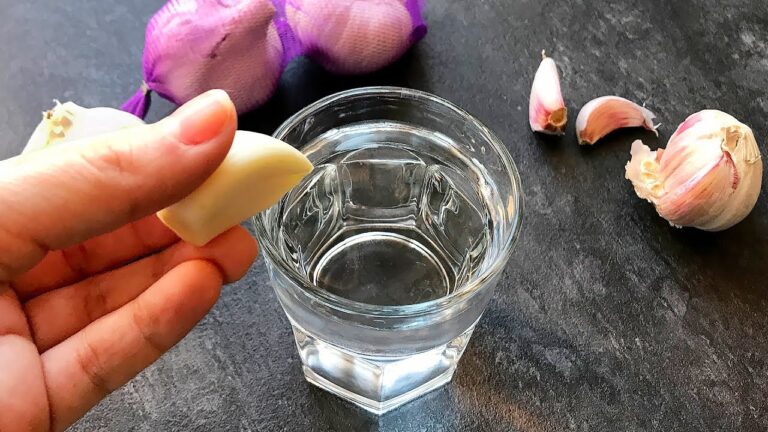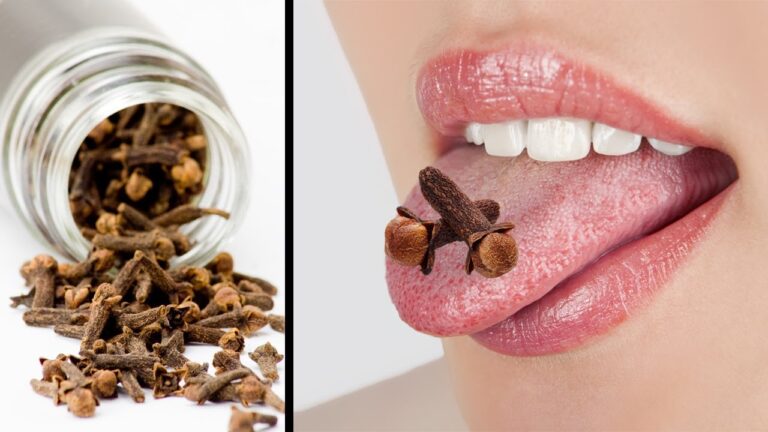Cloves are tiny but mighty spice buds with powerful health benefits. Chewing on a clove or two daily is an age-old natural remedy that can significantly enhance your well-being. Here’s what happens when you start chewing on cloves:
1. Fights Bad Breath
Cloves are rich in antibacterial properties that kill odor-causing bacteria in your mouth. The strong, aromatic oils in cloves leave your breath fresh and pleasant.
Benefit: A natural solution for fresher breath all day long.
2. Relieves Toothache
The compound eugenol found in cloves acts as a natural anesthetic. When you chew on a clove, it releases eugenol, which can numb pain and reduce inflammation in your gums or teeth.
Benefit: Immediate relief from toothaches or gum irritation.
3. Improves Digestion
Chewing on cloves stimulates the secretion of digestive enzymes, aiding in better digestion. It can also relieve bloating, gas, and nausea.
Benefit: A calmer stomach and smoother digestion.
4. Boosts Immunity
Cloves are rich in antioxidants and antimicrobial properties that strengthen your immune system. Regular use can help fight off colds, flu, and other infections.
Benefit: A stronger, more resilient body.
5. Regulates Blood Sugar Levels
Chewing cloves can help improve insulin sensitivity and regulate blood sugar levels, making them beneficial for people managing diabetes or prediabetes.
Benefit: Better control over blood sugar and steady energy levels.
6. Reduces Inflammation and Pain
The anti-inflammatory compounds in cloves help reduce pain and swelling in the body. Chewing cloves can also alleviate headaches and joint pain.
Benefit: Natural pain relief and reduced inflammation.
7. Supports Respiratory Health
Cloves can soothe a sore throat, reduce coughing, and clear nasal congestion. Their expectorant properties make them effective for respiratory health.
Benefit: Easier breathing and relief from colds or sinus congestion.
How to Chew Cloves Properly
- Take 1-2 whole cloves.
- Place them in your mouth and chew slowly to release their oils.
- Swallow the juices or spit out the leftover bits if they feel too strong.
- Do this once or twice a day, preferably after meals.
Precautions
- Cloves are potent, so don’t overuse them. Stick to 1-2 per day.
- If you experience any irritation or allergies, discontinue use.
- Consult your doctor if you’re pregnant, breastfeeding, or on medication.
Conclusion
Chewing on cloves is a small yet powerful habit with incredible health benefits. From fresher breath to better digestion and immunity, these tiny buds are a natural powerhouse. Start chewing on cloves today and watch the amazing changes in your body! ?✨
1. Fights Bad Breath
Cloves are rich in antibacterial properties that kill odor-causing bacteria in your mouth. The strong, aromatic oils in cloves leave your breath fresh and pleasant.
Benefit: A natural solution for fresher breath all day long.
2. Relieves Toothache
The compound eugenol found in cloves acts as a natural anesthetic. When you chew on a clove, it releases eugenol, which can numb pain and reduce inflammation in your gums or teeth.
Benefit: Immediate relief from toothaches or gum irritation.
3. Improves Digestion
Chewing on cloves stimulates the secretion of digestive enzymes, aiding in better digestion. It can also relieve bloating, gas, and nausea.
Benefit: A calmer stomach and smoother digestion.
4. Boosts Immunity
Cloves are rich in antioxidants and antimicrobial properties that strengthen your immune system. Regular use can help fight off colds, flu, and other infections.
Benefit: A stronger, more resilient body.
5. Regulates Blood Sugar Levels
Chewing cloves can help improve insulin sensitivity and regulate blood sugar levels, making them beneficial for people managing diabetes or prediabetes.
Benefit: Better control over blood sugar and steady energy levels.
6. Reduces Inflammation and Pain
The anti-inflammatory compounds in cloves help reduce pain and swelling in the body. Chewing cloves can also alleviate headaches and joint pain.
Benefit: Natural pain relief and reduced inflammation.
7. Supports Respiratory Health
Cloves can soothe a sore throat, reduce coughing, and clear nasal congestion. Their expectorant properties make them effective for respiratory health.
Benefit: Easier breathing and relief from colds or sinus congestion.
How to Chew Cloves Properly
- Take 1-2 whole cloves.
- Place them in your mouth and chew slowly to release their oils.
- Swallow the juices or spit out the leftover bits if they feel too strong.
- Do this once or twice a day, preferably after meals.
Precautions
- Cloves are potent, so don’t overuse them. Stick to 1-2 per day.
- If you experience any irritation or allergies, discontinue use.
- Consult your doctor if you’re pregnant, breastfeeding, or on medication.
Conclusion
Chewing on cloves is a small yet powerful habit with incredible health benefits. From fresher breath to better digestion and immunity, these tiny buds are a natural powerhouse. Start chewing on cloves today and watch the amazing changes in your body! ?✨









